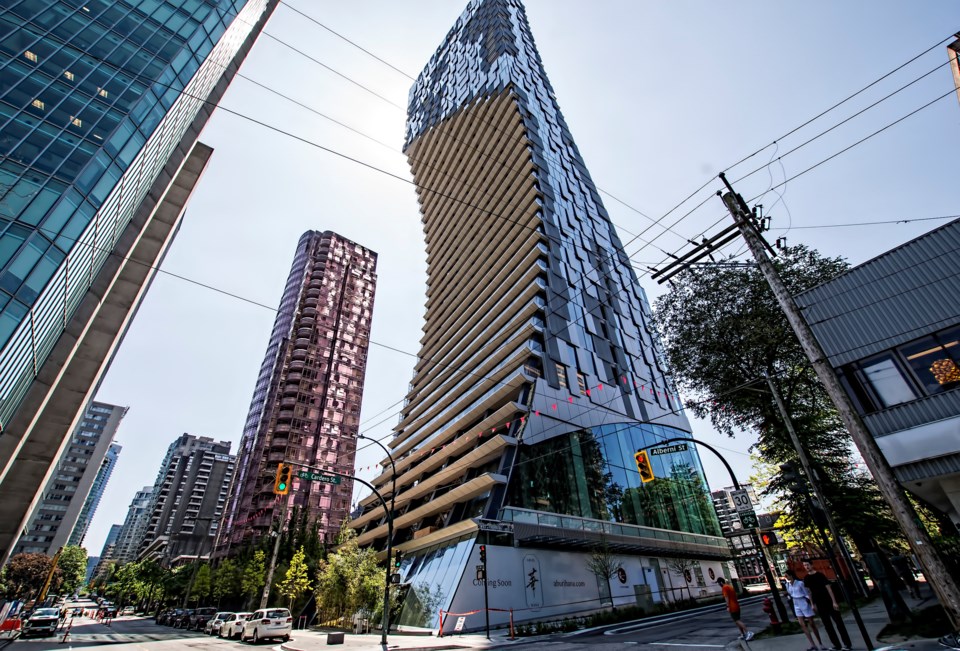The federal recently released its final recommendations for solving Canada’s housing crisis. The contains suggestions for adding new affordable and climate-friendly homes by 2030.
The task force was launched in September 2023 to help federal, provincial and municipal governments address housing affordability and the climate crises in Canada. The report is aimed at building 3.8 million new homes, in line with estimates of housing need from the .
However, the task force’s report recommendations fall short by failing to fully consider land and housing market dynamics.
Its recommendations could incentivize the building of overly-dense urban cores, perpetuating something called “tall and sprawl,” a term that refers to surrounded by large areas of lowrise housing.
Protecting greenfield areas
The report’s premise is on target in many ways. Considering and most , any effective urban climate solutions must consider housing.
The report argues that increasing urban density can help protect greenfield areas from being converted to housing. However, it doesn’t take into account that .
This can intensify , a phenomenon where an urban area is warmer than surrounding areas, during .
The report recommends governments implement province-wide zoning rules to better manage urban development. But it also suggests eliminating zoning regulations that ensure new buildings leave space for , like trees that provide urban cooling and absorb stormwater.
These actions contradict the report’s excellent suggestion that municipalities should plan for 40 per cent tree canopy cover, which .
Trees need places to grow and thrive, which is typically ensured by regulations like minimum setbacks, landscaping requirements and maximum building footprints. Without these measures, land and housing markets will likely overlook the importance of providing these public good aspects, and .
Housing research tells us how households respond to too-dense, nature-deficient environments. We know that many households seek , which refers to medium-density, family-sized housing such as townhomes, duplexes and triplexes, and lowrise to midrise apartment buildings.
Without they demand, , increasing pressures for greenfield conversion.
De-incentivizing unaffordable housing
The report encourages municipalities to , facilitated by financing, to help them acquire new land.
This is , but it could backfire by adding fuel to already-inflated land values because it fails to acknowledge .
Housing markets are more than builders who supply homes and residents who demand them. Markets for land, where housing is built and what homes are built are shaped by and .
Read more:
For the report’s strategy to succeed, additional policies must rein in investors and developers by de-incentivizing their participation and reducing their impact on land value.
The federal government can address this by . Provincial governments can implement requirements for a percentage of affordable homes ) across municipalities — not just around transit stations — to prevent developers from leap-frogging regulation by building elsewhere.
Inclusionary zoning decreases by reducing market developers’ profits, which creates an entry window for lower-cost and non-profit developers, as envisioned by the report.
The report’s recommendations to eliminate height and density restrictions near transit will further inflate land values. While building more units on a given piece of land might appear to lower housing costs, this is not the case.
At present, and demand high finance costs to compensate for their high risk. Land values reflect these high costs and profits, especially in areas where highrise builds are expected to be allowed.
Rethinking urban spaces
How can these conflicts be resolved? One approach is to establish both minimum and maximum residential zoning heights and densities, aligned with the typologies the report supports.
This would include building 10-unit apartments that follow pre-approved designs in residential neighbourhoods, zoning that encourages along main streets and creating 16-storey maximum zones to encourage the building of single-stairwell 16-storey buildings recommended in the report.
As and other climate-friendlier highrise forms develop, zoning regulations should adapt to enable these typologies to facilitate and reward affordable, . There can still be a place for highrise buildings in well-designed cities, particularly if to create .
![]()
Dawn Parker receives funding from the Social Sciences and Humanities Research Council, the Canadian Institutes of Health Research, the Natural Sciences and Engineering Research Council of Canada, Environment and Climate Change Canada, and Mitacs Canada



